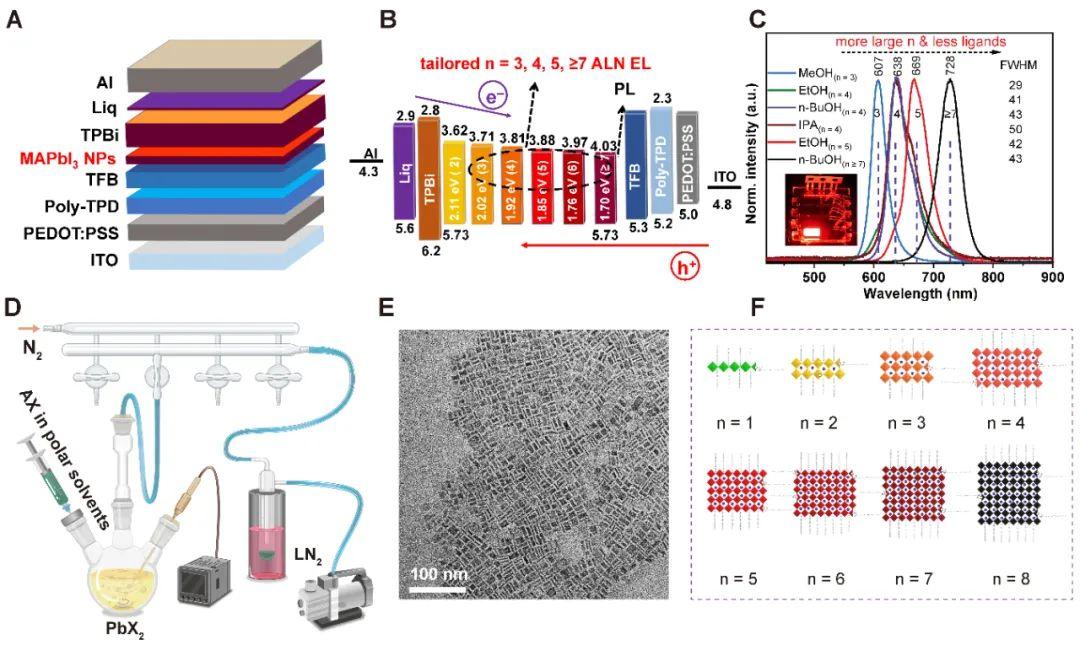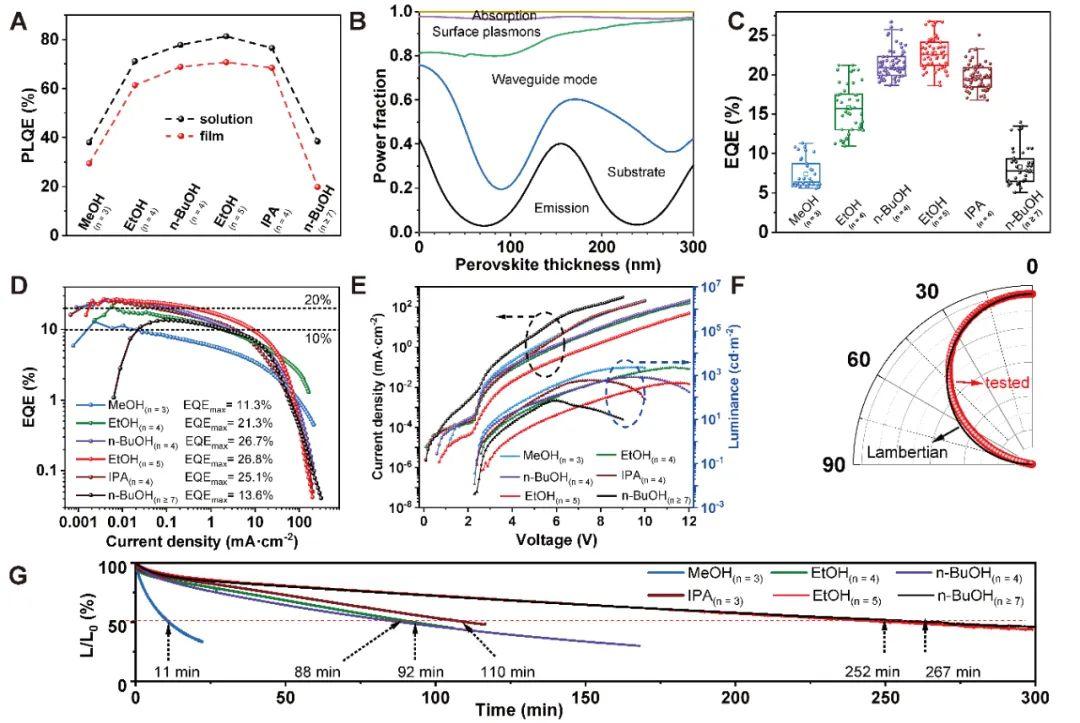New atomic layer controlled quantum dot LED breaks through the bottleneck of display technology
The research team of Wang Ligang from the School of New Materials, Peking University Shenzhen Graduate School, in collaboration with international research institutions such as the Cavendish Laboratory of Cambridge University, has made breakthrough progress in the field of quantum dot light-emitting diodes. The research innovatively proposed a light-emitting diode technology solution based on the regulation of atomic layer quantum dots. The relevant results were published in the journal Science Advances, providing a new solution for the development of ultra-high-definition display technology.
The research team developed a "polar solvent-assisted rapid evaporation synthesis technology (FEPS)" to successfully prepare quantum dot materials with different emission wavelengths by precisely controlling the number of atomic layers of perovskite quantum dots. Experimental data show that this technology can achieve a continuously adjustable electroluminescence peak of 607-728nm, with an external quantum efficiency of 26.8% and a color purity half-peak width of only 29-43nm, which is significantly better than the 61nm of traditional bulk quasi-two-dimensional perovskite materials. More importantly, the technology achieves wavelength control accuracy at the atomic layer level, with the wavelength difference between different batches of devices less than 1nm, which is much better than the 40nm fluctuation of traditional size control technology.

MAPbI3 perovskite quantum dot LEDs with different atomic layers
This technological breakthrough effectively solves the two major technical problems existing in traditional quantum dot displays: by replacing size control with precise control of the number of atomic layers, the influence of factors such as precursor ratio and reaction conditions on the luminescence wavelength is avoided; the non-halide system design is adopted to successfully suppress the component segregation problem of mixed halide perovskite materials in optoelectronic devices. Carrier dynamics studies have shown that the charge transfer mechanism plays a dominant role in the electroluminescence process. This discovery provides an important theoretical basis for the study of energy transfer mechanisms in multi-bandgap systems.
This technical solution has shown significant advantages in the display field: the quantum dot LED devices prepared by it not only have excellent color performance, but also achieve breakthroughs in working stability. Experimental data show that under continuous working conditions, the device can still maintain stable luminescence performance and color performance, providing a reliable material system for the next generation of ultra-high-definition display technology.
The research was jointly completed by a joint Sino-British scientific research team and was jointly funded by the Newton International Scholarship of the Royal Society of the United Kingdom, the National Natural Science Foundation of China and other institutions. The research results not only provide a new technical path for quantum dot display technology, but also expand new ideas for the application of perovskite materials in the field of optoelectronic devices.

Performance of quantum dot LEDs with different atomic layer numbers

